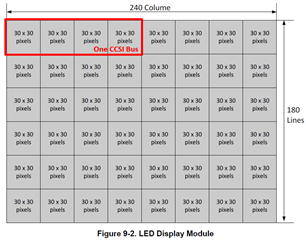What is the max frame rate when I use just 16x16 LED matrix with one TLC6983?
In my comprehension,
I need total clock count = (ST+HB+1pixel DATA+END) * 16 channel * 16 line = (18bit + 16bit + 17*3bit + 18bit) * 16ch * 16line = 26368 bit
If I use the max SCLK 50Mhz then 26368/50Mhz = 527.36us and then about 1896Hz.
Am I correct?



